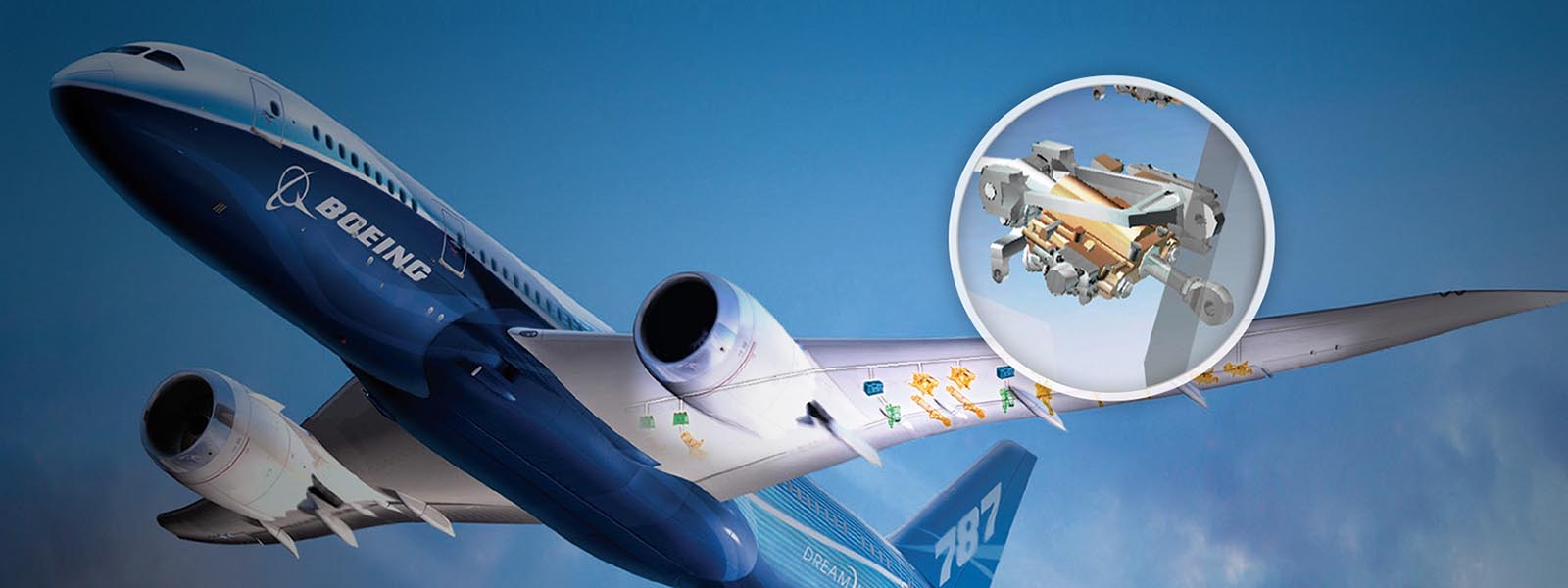In 2013, Moog Inc. – a $2B manufacturer of motion control systems for the aerospace, energy, industrial equipment and medical device industry – needed to solve a problem.
- 24Number of months to develop
and launch new product - 2Hardware tests before
product launch - 500xAmount of performance data collected
with computational testing.
Actuators are often only tested once before product launch because of program time and budgets. To prevent field failures, OEMs add redundant systems that add weight and cost. However, in the aerospace industry, one extra pound of weight costs $3,000, so redundancy is not always an option.
A flight control actuator bearing experienced rolling contact fatigue and wear failures in testing at the end of a development program. To change the bearing would require a full actuator re-design from the inside out. With the program deadline upcoming, the actuator needed a quick solution to ensure it could survive its future duty cycle of highly variable temperatures, cycles, and acceleration causing housing deflection and misalignment.
Moog used Computational Testing to analyze and solve the actuator bearing failure. They had Sentient Science’s team build a DigitalClone of the bearing and actuator system, taking into account the multi-body dynamic system, tribology, and material microstructures, to accurately predicted the crack initiation and short crack propagation fatigue life. Now, Moog was able to quickly computationally test answers to how changes to the bearings’ duty cycle, surface finishing, residual stresses, and material would extend its life to meet the system’s endurance requirements and affect the designs cost.
About Moog, Inc.
Moog is an American worldwide designer and manufacturer of motion and fluid controls and control systems for applications in aerospace, defense, industrial and medical device markets. Their products and systems include military and commercial aircraft flight controls, satellite positioning controls, controls for steering tactical and strategic missiles, thrust vector controls for space launch vehicles and controls for positioning gun barrels and automatic ammunition loading for military combat vehicles.
